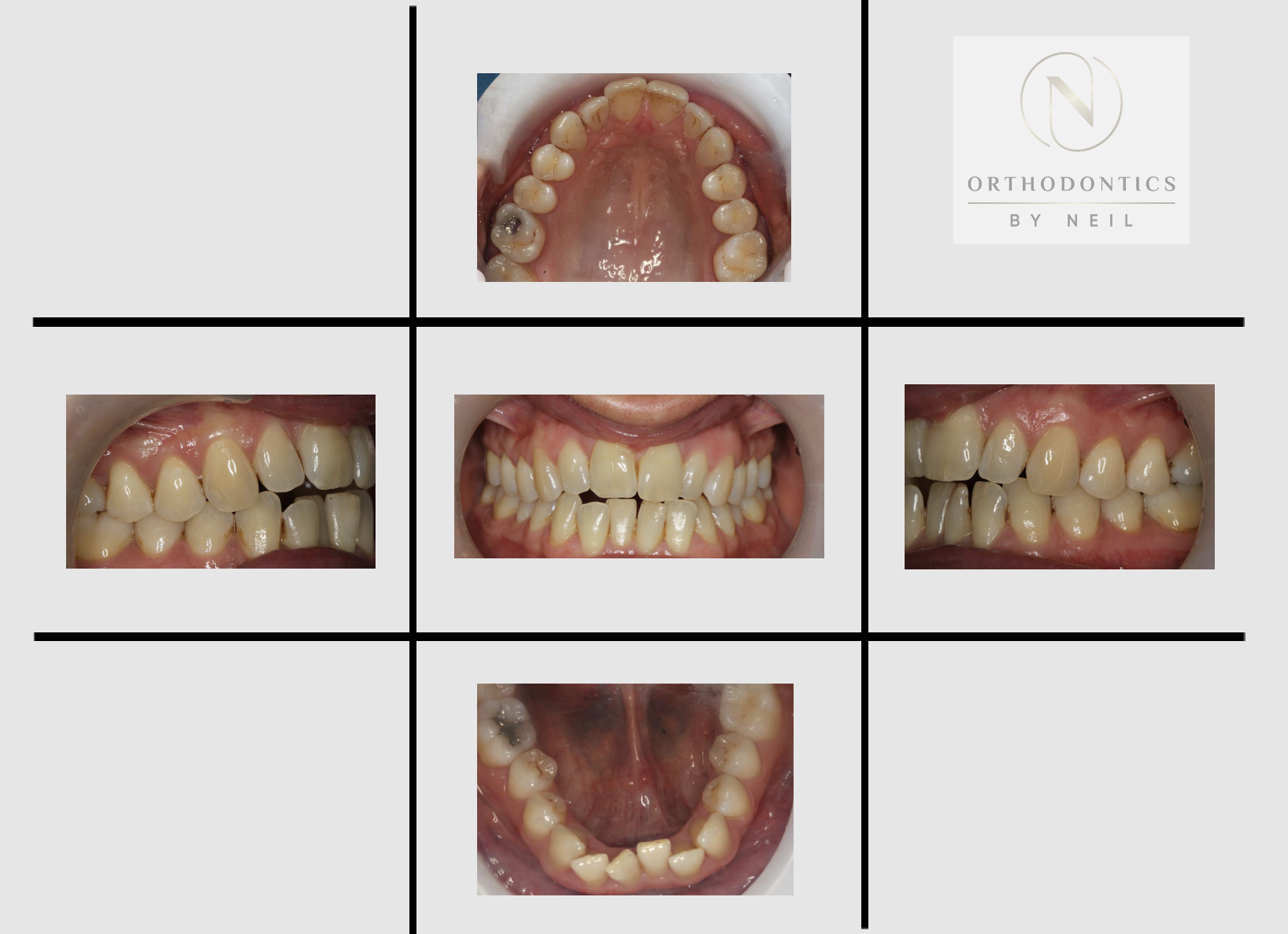 Neil Patel explores how to correct malocclusion and whether clear aligners can help avoid any potential surgery.
Neil Patel explores how to correct malocclusion and whether clear aligners can help avoid any potential surgery.
This patient attended concerned about the gap between her teeth and found it very difficult to bite into food. She presented with a class I malocclusion, increased vertical facial heights and no significant transverse discrepancy.
The main features of her malocclusion included.
- Mild to moderate crowding in the upper and lower arches
- Reduced overbite
- Class III – reduced overjet
- Class I buccal segments.
Case discussion
A class III malocclusion is defined by the presence of a class III incisor relationship. This may range from a reduced overjet or edge-to-edge incisor relationship to a reverse overjet. The severity typically reflects the underlying skeletal pattern.
However, in some cases, considerable dento-alveolar compensation masks the skeletal discrepancy.
Many complex class III malocclusions will require a joint orthognathic and orthodontic approach. Understanding which cases to treat with orthodontic camouflage is therefore critical to a successful treatment.
Typically cases you can treat with orthodontic camouflage may present with class I buccal segments and a mildly reduced overjet, similar to the case in discussion.
Using fixed appliances in the lower arch is counter productive when correcting a class III malocclusion. Especially if the lower labial segment is moderately or severely retroclined.
Fixed appliances in the lower arch can lead to proclination of the lower incisors. This positions the lower labial segment to the correct inclination relative to the mandible. If there is a true skeletal AP discrepancy this will lead to worsening the class III malocclusion.
This modality of treatment mechanics is the basis of orthognathic surgery. The class III malocclusion is increased prior to the surgical intervention.
Therefore cephalometric analysis to determine the inclination of the incisors is key in planning the orthodontic movements.
The greater dentoalveolar compensation there is, the more complex the case is using orthodontic appliances alone.


Invisalign treatment
Invisalign provides a suitable treatment option to treat mild-moderate class III malocclusions.
As aligner systems wrap around over the incisal edge to meticulously control the inclination of the lower labial segment during the prescription phase will allow control of the class III correction.
The use of class III traction by bonding buttons onto the upper molars and applying elastics from the molar buttons to hooks cut into the aligner on the lower canines reinforces class III anchorage.
In this particular case, IPR was also prescribed in the lower arch only to align the lower labial segment and ensure proclination was minimised.
Upper labial segment proclination was prescribed to aid incisal relationship correction. Use of vertical attachments on the upper arch to extrude the upper incisors was paramount to improve the overbite and also enhance post treatment stability.
I recommend overcorrection of the overbite and incisal relationship to counteract any relapse post treatment.
We prescribed fixed upper and lower bonded retention in this case to minimise vertical relapse. A lower thermoplastic retainer and upper thermoplastic retainer reinforced with a 1mm stainless steel wire (to maintain expansion post treatment) was provided for night wear.
Catch previous Ortho expert columns
- The ortho expert – Invisalign case study part one: the deep bite
- How to master the virtual consultation.
Follow Neil on Instagram, @neilortho, and ask the ortho expert questions anything orthodontic related.
Follow Dentistry.co.uk on Instagram to keep up with all the latest dental news and trends.




